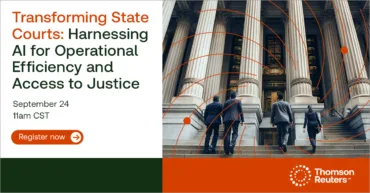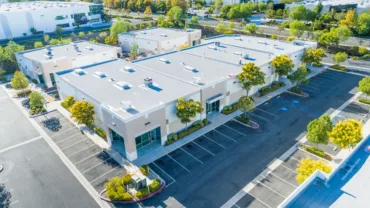Government legal departments have many means to achieve substantial improvements in efficiency, speed, and comprehensiveness
Government attorneys report having high levels of job satisfaction, with one big caveat: Many are stuck with antiquated technology systems which grow more inefficient by the day. This eats up their time and gives them a very thin margin for error.
That’s why government legal departments should prioritize moving to next-generation legal technology. Employing systems with such features as generative artificial intelligence (GenAI) and automated document management enables lawyers to get their work done faster, more thoroughly, and with greater value to clients.
Too often, the average person’s concept of government bureaucracy is one of vast inefficiency, over-complexity, and glacial timeframes. A technology upgrade can make that perception obsolete.
Jump to ↓
| An inefficiency crisis in the making |
| The challenge for government lawyers |
| A technological solution |
An inefficiency crisis in the making
In the Thomson Reuters Institute State of the Government Legal Department Report 2024, almost three-quarters (73%) of government lawyer respondents said they’re at least somewhat confident that they have the tools and technology they need to do their jobs effectively.
At the same time, however, nearly two-thirds (65%) of respondents said their departments have yet to determine how to address a perceived lack of internal efficiency. Over half (58%) said staff spend too much time on administrative tasks. And a near-majority of respondents (47%) feel they also devote too much time to administrative tasks and not enough to their actual legal practice.
There’s also a growing desire for government departments to be more tech-savvy. In a 2020 study by the Center for Digital Government, 67% of surveyed citizens said they prefer to access government services online, compared to only 16% who prefer in-person. And government entities lag vastly behind the private sector in terms of meeting online expectations: see 80% of U.S. federal agencies scoring “poor” or “very poor” on Forrester’s U.S. Federal Customer Experience Index, compared with only 14% of brands in the private sector.
In part, this divide is owed to sector-unique issues. Most government entities are constrained in their budgeting and face bureaucratic hurdles should they seek to improve their systems. But the need to upgrade technology won’t go away. The longer that government legal departments delay their efforts, the harder getting up to speed will become.
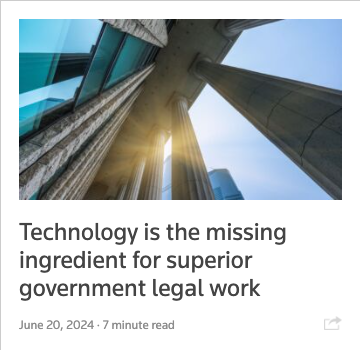 |
The challenge for government lawyers
Government lawyers in regulatory agencies handle diverse tasks, from monitoring legislation to aiding in litigation. They deal with various inputs and collaborate with many people, but outdated intake procedures and document management systems make their work cumbersome. Many offices still use paper files and old computer systems, leading to inefficiencies. For example, the process of revising a rule often involves multiple parties making changes via email, requiring lawyers to track and reconcile drafts manually. Such a laborious process increases the chance of errors and delays, causing frustration and exhaustion among lawyers.
A technological solution
The good news: Government legal departments have many means to achieve substantial improvements in efficiency, speed, and comprehensiveness.
Systems such as HighQ for Intake and Matter Management enable lawyers to build customized automated workflows suited to existing processes. Consider our earlier example of a regulatory revision process. Now imagine the same lawyers able to automatically track the status of all versions of documents — a system that also automatically flags any parties who have failed to respond to a particular change.
Instead of manually doing edits to the revision, lawyers can use document versioning and redline comparisons to make the process far smoother. They employ features like version control, auditing and reporting, access permissions, approval workflow, and custom metadata, and let all parties execute documents with integrated eSignatures. They’re able to communicate via secure and integrated messaging systems and house all documents in virtual data rooms that relevant parties can access.
With HighQ, lawyers are also able to create automated performance metrics to provide real-time updates on:
- The number and frequency of requests
- The number of responses required and completed
- The proportion of responses made on time and those which were delayed
Similar improvements abound in document intake. Lawyers who handle public records requests, for instance, can compile all file types and formats in a single online location, and use such features as bulk redaction to enhance request processing and response time.
Further, government legal departments will gain a sharper picture of their overall performance and know where to make improvements. Systems like HighQ enable users to analyze the department’s current workload, activity, and risk levels, on everything from a weekly to a multi-year scale.
A better way to streamline government legal work
Many government lawyers do exceptional work while using tools that slow or even hinder them. Moving to modernized legal technology will not only remove those obstacles, but empower government offices to achieve performances that equal, if not better, those of the private sector.
Ready to reach the peak of productivity? Request a free HighQ demo and transform your government legal department today.
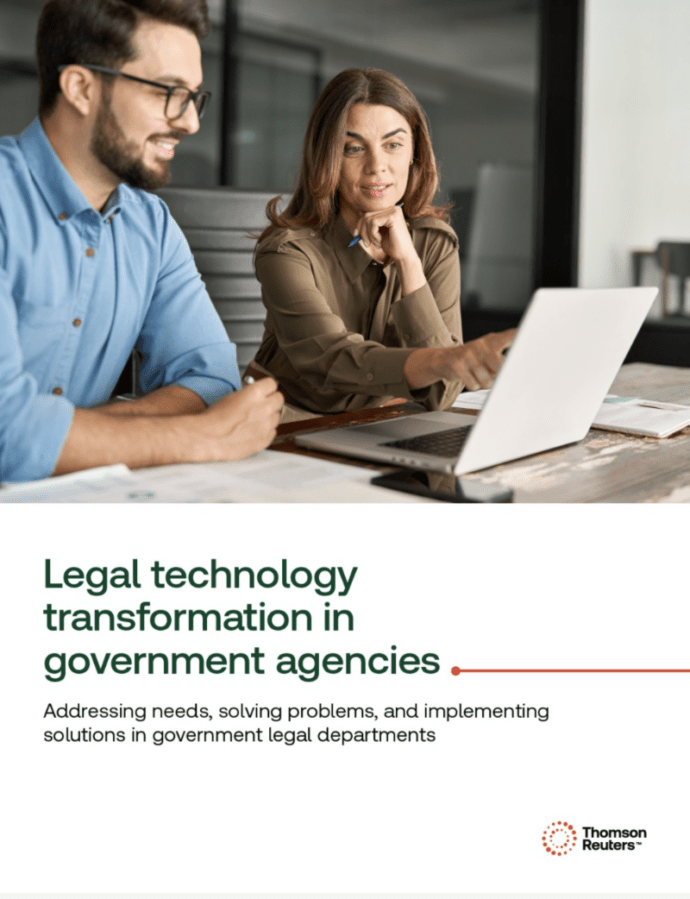 |
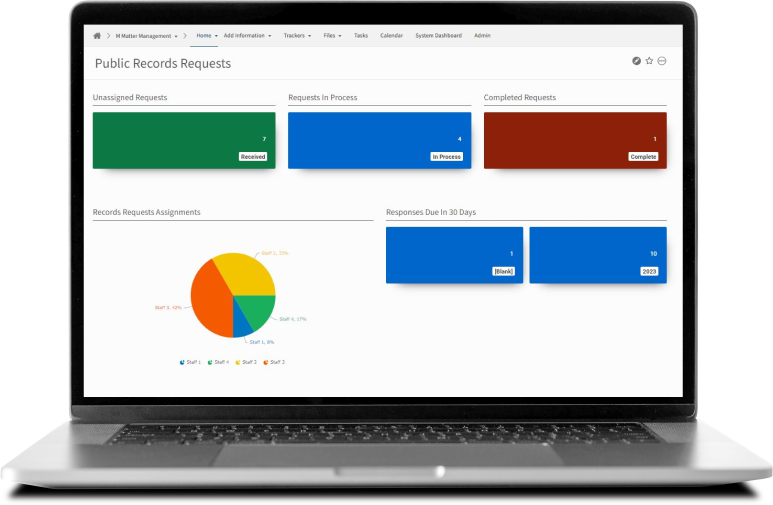 |


